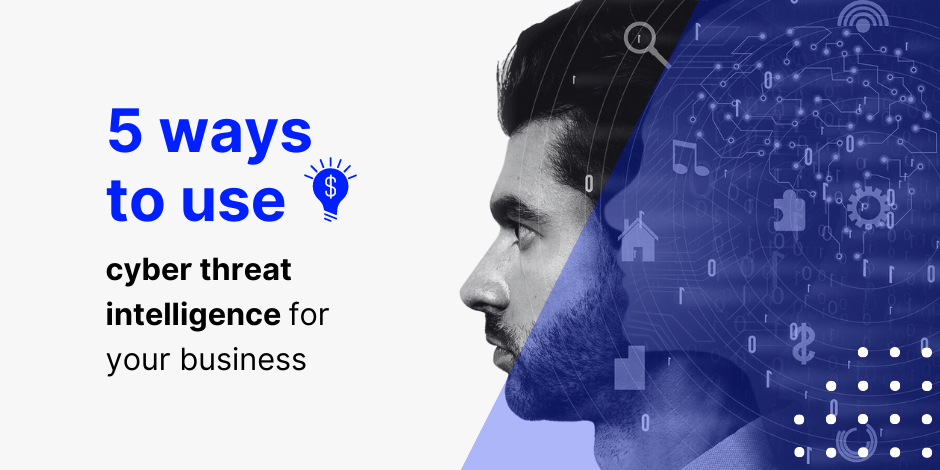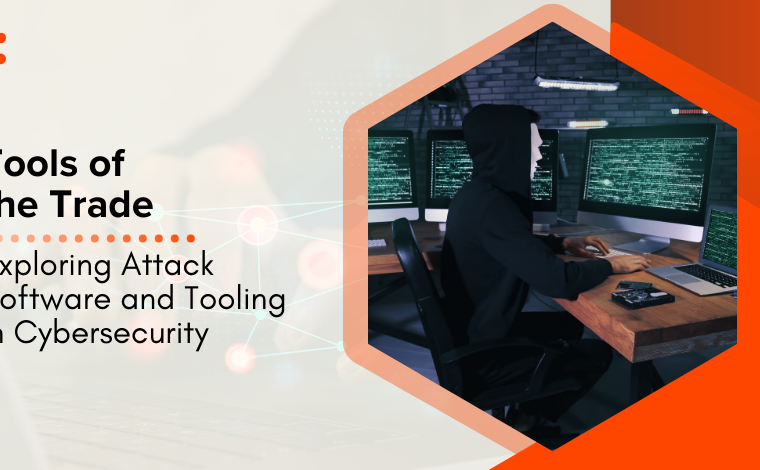5 Ways to Use Cyber Threat Intelligence for Your Business

Stay Informed With Our Weekly Newsletter
Receive crucial updates on the ever-evolving landscape of technology and innovation.
Cyber threat intelligence can reshape your business’s operations with more secure safeguards after identifying all the potential cyber threats the system is exposed to. This is an absolute requirement for firms of every size in a data-driven world with an ever-increasing dependency on online transfers.
Companies seek well-trained and proactive cybersecurity analysts who can research threats properly to maximise the result of threat intelligence tools. Then, after analysing the potential cybercrimes properly, these businesses set up risk assessments to identify security loopholes within a firm.
This article will look deeper into how cyber threat intelligence can protect your business, and we will be looking at five ways you can implement the system in your own company!
How can cyber threat intelligence protect your business?

Cyber threat intelligence for your business protects you by updating your critical threat-related information. However, these threats pose a risk to sensitive user data and other parts of the company’s infrastructure, so employing every efficient countermeasure against them is essential.
These threat intelligence tools are very popular with security analysts because they assist them with the threat assessment process and help them devise actionable steps to help prevent future cyberattacks. For example, if you run an e-commerce store, look through this guide to develop the right cybersecurity plan to protect your business!
Here is a look into a few benefits that your firm can experience after incorporating cyber threat intelligence as part of your security architecture:
Lower expenses

While cyber threat intelligence will start as a cost in your business expenditure, it will ultimately save you a lot of money. The reason for this financial incentive reflects the growing truth of the cybersecurity industry – while cyber threats are much more accessible to cyber criminals, they are still high costs for the affected business.
When a company’s network is under attack, it takes resources, including paid experts with paid tools, to mitigate the situation and bring it under control. However, an attack also has other long-term consequences. For instance, if the security breach leads to data theft, consumers and other firms could sue the target business. These fines, regulations fees, and additional legal costs can produce quite a hefty bill.
Cyber threat intelligence tools like SpectralOps can help you analyze potential threats before they affect your business and improve response time. This contributes to financial savings and improves your security investments since analysts can focus on the threats that pose the most significant risk to a business.
Financial incentives make threat intelligence an absolute necessity for your cyber security team and help them make decisions that improve efficiency within business operations, protect consumer data and uphold your company’s sales and reputation among clients.
Infrastructure security
When cyber threat intelligence is a part of your system, you can use human resources for other needs. This leads to improved infrastructure security where you have complete information on the cyber threat landscape your company is exposed to, with the complete list of cyber threat actors that could cause an issue.
This helps you to take a more strategic approach to develop a defense system that can target these attack vectors on all ends. In addition, you can collaborate with different stakeholders from the company and use multiple threat intelligence tools to stay one step ahead of cyber criminals that target your network with malicious intent.
Reduced risk of cyber attacks
Since a cyber threat intelligence system gives increased visibility for your defense systems, any actors infecting your network or attempting to do so are immediately exposed. After understanding the security situation for your firm, you can take specific measures to improve incident response times and decrease the possibility of potential false positive assessment results.
Doing so helps concerned stakeholders focus on key points that need attention to limit data loss, theft, or any other negative impact on business operations. With an AI-powered automated threat intelligence system, intensive manual analysis techniques can be put to rest. Analysts can provide better results by including these tools in their security optimization process.
What are five ways to implement cyber threat intelligence?
You can use cyber threat intelligence for threat assessment, threat analysis, cyber security measures, fraud prevention, and to create security roadmaps for your firm on an executive level.
While there are several types of intelligence cycles and different intelligence types, like operational and tactical intelligence, most of it is targeted at guiding the decision process for cybersecurity experts. Using these tools, they get the intelligence that needs to be addressed immediately. They have all the information about the problem, which helps address the situation with the right solutions.
The process takes raw data from internal and external sources, primarily focusing on data transfers going in and out of the network, and processes its evaluations as actionable intelligence. It is important to use updated versions of the best threat intelligence tools to stay one step ahead of cybercriminals.
Here is a more detailed look into the five ways you can use cyber threat intelligence to protect a business better:
Threat assessment

With the threat assessment features of cyber threat intelligence, data is collected from different sources that indicate a threat. This collected data is then assessed to create a complete profile for a particular threat actor aimed at understanding the pattern, target, and end-motive. These assessments are critical for business security in a hostile environment where sensitive data is constantly at risk from advanced persistent threats.
With threat intelligence at hand, cyber security teams make data-based decisions to create resistance and combat any such attacks. In addition, threat assessments often bring forth previously unclear data to the security team, which can drastically improve existing defense tactics.
Some organizations do not utilize the precious data they gather from threat assessments, which ultimately provides no real value. It is essential to utilize threat intelligence systems to their fullest rather than just focusing on collecting data with SIEM tools or firewalls. If you want to learn more about SIEM tools in cyber security, check out this guide here!
Cyber security operations
One key feature of cyber threat intelligence is their involvement and improvement of cyber security operations, where they help the concerned specialist to understand a threat actor’s process and intentions in detail. However, it can be unnecessarily intensive if the security team processes each cyber attack alert individually.
In some cases, severe attacks might not be given the appropriate attention. In other cases, for instance, with DDOS attacks, it is nearly impossible to sustain a cloud network without the help of threat intelligence tools. Using the right toolkit helps disregard the guesswork. It provides SOC security (security operations center) teams with actionable threat information before it becomes an issue while disregarding false positive alerts to avoid distractions.
These threat intelligence reports are not just used by cyber security teams, as other departments, including the marketing and operations departments, often use them to ensure ideal results with their strategic decisions.
Fraud prevention
Identity fraud involves misusing a brand’s name or sensitive company data with malicious intent. This is equally dangerous for businesses of all sizes, as one such incident can destroy a business’s reputation with its clientele. Threat intelligence systems can thwart a cyber criminal’s intention to commit identity fraud by planning specific countermeasures based on their assessment of the threat actor’s decision-making process.
If you keep your threat intelligence setup up to date, it can protect your business against most types of identity fraud, including analysis of the dark web for stolen user data to phishing scams carried out with the company’s name. Threat intelligence solutions will identify such instances that can harm your business’s reputation and take swift action against the perpetrators.
Security roadmaps
Security roadmap design comes to mind if we look at one of the critical benefits of cyber threat intelligence from an executive level. Security roadmaps serve as a long-term plan to cater to an organization’s needs. It starts with a baseline assessment and includes the required steps to enhance overall security infrastructure. Cyber threat intelligence is an integral part of this process since it highlights the topics that need the most attention, and this is the first part of the roadmap known as OT risk assessment.
With the proper roadmap, higher-level stakeholders, including members of the executive board and senior managers, can make better security investments that are most beneficial for more robust cyber defenses.
Threat analysis with tactical intelligence

Using the tactical intelligence system can automate the threat analysis for your business’s network. This type of analysis provided details on how the attack was strategized and executed and the overall process. This can help create systems that prevent data comprise and theft.
However, one issue with this approach is that most of your analysis will only be valid briefly since cyber threat actors are quick on their feet. Nevertheless, you can undoubtedly get a lot of information, including the source of the attack and more precise risk evaluations, and an idea of the estimated incident response time.
You need to find a threat analysis system that is more efficient and that can easily protect you from false positives that can often occur when the data is analyzed without a complete strategy.
Conclusion
It is ideal for every company in 2023 to incorporate a robust threat intelligence system to protect their systems best. However, a lot of work is involved in the pre and post-stages of this decision.
Before deciding on your firm’s ideal threat intelligence system, you must get your security system audited by a cybersecurity team. After this, you will need a SOC team to monitor results consistently and update your system.
If you enjoyed this article and would like to learn more about a career in cyber threat intelligence and cybersecurity, book a career consultation with one of our experts at the Institute of Data.




